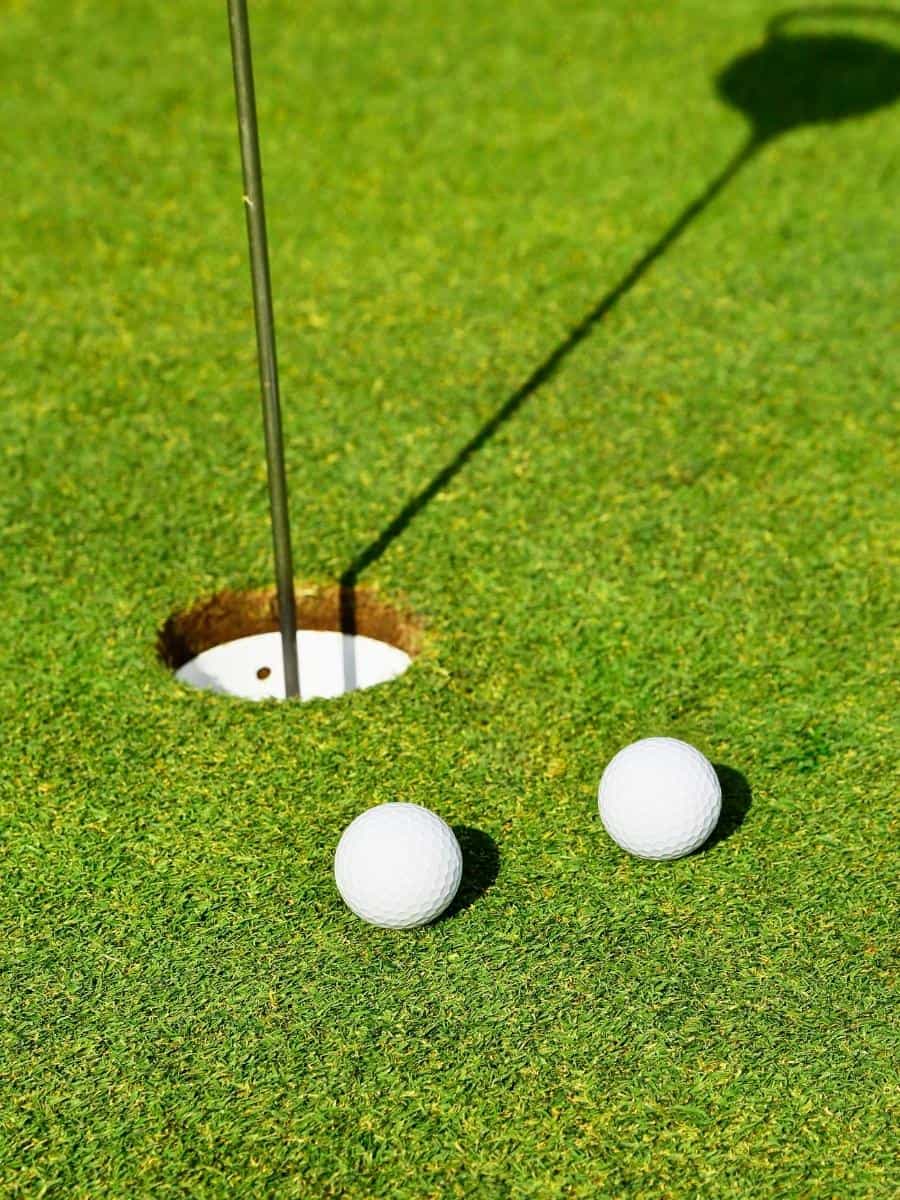What Is A Good Golf Handicap For A Beginner?
As a newbie golfer, you may wonder what a good handicap is for you. The advantages of having a golf handicap include competing fairly against other players and monitoring your progress as a golfer. So, what is a good handicap for beginners?
A good handicap for beginners is considered 18 and below. However, beginners typically start with an average handicap of 30 and above as they are still learning the ropes. This means that they are not yet breaking 100. A handicap of 30 and over means newbies fall into the high handicap category.
All golfers should aim to have the lowest handicap possible. Here is all you need to know about a good golf handicap for a beginner and how you can lower your handicap.

What Is A Good Gold Handicap For A Beginner?
Golf has three types of handicaps: low, mid, and high.
- Low handicap: 0–10.
- Mid-Handicap: 11–18.
- High handicap: 19 and above.
Unsurprisingly, rookies in golf would have a higher handicap because they are still learning the game. In comparison, the lowest handicaps would go to experienced golfers who have been in the game much longer and know the ins and outs of playing to get low handicaps.
A handicap is not automatically allocated to new golfers. A golfer must sign up for a USGA-approved club or regional golf association to be given an official handicap.
After joining a club, players must play 54 holes in total. These are made up of any mix of 9-hole or 18-hole rounds. The player will then be eligible for a handicap index.
Typically, the average beginner golfer has a handicap of at least thirty and above. This implies they aren’t very good at golf, as they aren’t even breaking 100.
It is a great achievement when a novice starts to lower their handicap, especially when they can get it to be either 18 or lower. This means that the golfer is doing a great job at breaking 90.
See also: Low vs. High Handicap In Golf (Defining Golf Handicaps)

How Can Beginners Improve Their Handicap?
It isn’t surprising that many golfers aim to be in either the mid or low handicap. However, it isn’t easy, as it takes a lot of hard work and skill. Many golfers work hard over their swing and other such things when they just need to play smarter. Here are a few tips for quickly dropping into the single digits.
Set Aside Your Driver
Golf instructors aren’t kidding when they advise those new to golf to put away their drivers.
Yes, you can hit the ball a long way with a driver. But if your skill levels can’t control it yet, you will obviously go a long way offline and into the rough or worse.
You should aim to hit your 3 or 5 wood off the tee, which are easier to control. Okay, your ball might be 20 or 30 yards shorter in distance, but if it’s on the fairway, you will have a much simpler second shot.
Personally, I nearly always prefer to hit my 3 wood off the tee because I can still control it better than my driver – even after all these years!
Don’t Aim For The Pin!
The greenkeepers move the pin around the green at least once a week to give golfers different degrees of difficulty on approach shots to the green and putts on the green.
To reduce your degree of error by missing the green, and giving yourself a putting opportunity, even if it’s a long one, beginners are always advised to aim for the center of the green, not directly at the flag with approach shots.
Do you want to know my pick of the easiest irons for beginners? Check out this article, 5 Easiest Irons To Hit For Beginners.
Work On Your Lag Putting
This is where you’ll want to focus your practice: Improving your lag putting. If beginners want to achieve a single-digit handicap, such as a 3 handicap, the three-putts definitely have to go. You must give yourself ample opportunities to sink two putts for par. Additionally, arrange your layup putt so that the final putt is uphill.
Good lag putters use the Goldilocks Method. Utilize your perception to assess the distance to the hole while standing behind the ball. Take a practice stroke that you recognize is overdone, then one that you recognize as being insufficient.
What’s the reason for this?
This is because you’ll discover the one that seems just right between those two. Step forward and roll the ball nearly to the hole with the perfect stroke. You may cut strokes off your game by avoiding three-putt greens and excelling at distances of five feet or fewer.

Work On Your Short Game
Inside 100 yards, ensure you work on your short game, chipping and pitching around the greens. Your handicap will undoubtedly go down as a result. Additionally, practice it five times as much as your long game. You’ll notice a noticeable improvement.
Several may advise you to become an expert at every stroke in chipping and pitching around the greens. However, you’re good to go if you can perfect one shot you feel very confident with from 10 to 65 feet. Find the shot where you feel most comfortable, and work on it.
“I prefer bump and runs with my 8 iron, maybe because I play in the UK!”
Golf Educate
Consider Getting Lessons
Taking lessons from a qualified teacher and having the appropriate equipment fitted are options, but they are also more expensive. Nonetheless, you can read this article to know whether I think golf lessons are worth it.
I do like to read golf books and I recently purchased Ben Hogan’s Five Lessons: The Modern Fundamentals of Golf from Amazon which I have studied and learned immensely from. I highly recommend this book because I realized how much I didn’t know about the basics after reading it! It’s a great read for a beginner.
Another good idea is asking if an experienced golf will allow you to play a few rounds with him. Watch how he conducts himself and approaches each shot, especially if he has a poor lie or finds a bunker. A good golfer will plot his way around the course minimizing risk and maximizing opportunity.
New golfers should set a plan and have milestones. Golfers must also ensure they care for their golf clubs, which will help maximize the player’s performance.
Furthermore, practice is key. If players don’t get the golf swing just right, their chances of lowering their handicap as a beginner are low. Are you looking for a checklist to improve your golf swing? Head over here, Golf Swing Checklist For Beginners.

Final Thoughts
Unsurprisingly, beginner golfers do not have a low handicap, and their average handicap will not be below 30. This means they fall in the high category of handicaps. Players can lower their handicaps by creating a plan and incorporating the tips mentioned above. It may take some time, but newbies can reach the single digits if they put in the work.






